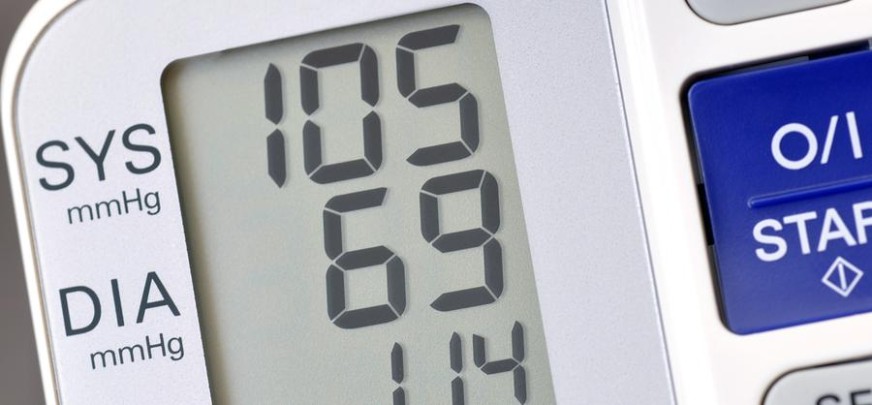When you visit your doctor, one of the first things they check is your blood pressure. Even pharmacies and grocery stores have machines to let you measure it. So it must be important, right? But what do those numbers really mean?
What Is Blood Pressure?
Blood pressure is the force of blood inside an artery. A blood pressure reading measures the force of blood against the walls of an artery.
Blood pressure is measured by temporarily stopping the flow of blood in an artery, using a cuff placed around the upper arm. Air is added to the cuff until blood flow stops. As the air is released, blood begins to flow through the artery again. Blood pressure is measured as the blood begins to flow again.
- Blood pressure readings consist of an upper and lower number (such as 120 over 90 or 120/90). Blood pressure readings are measured in units called millimeters of mercury (mm Hg).
- Systolic blood pressure is the first or upper number in a blood pressure reading. Systolic pressure is the pressure of blood against the artery walls when the heart has just finished contracting or pumping.
- Diastolic blood pressure is the second or lower number in a blood pressure reading. It is the pressure of blood against the artery walls between heartbeats, when the heart is relaxed and filling with blood.
A normal blood pressure reading, according to the American Heart Association, is a systolic number below 120 and a diastolic number under 80. This reading is typically read as 120/80, or 120 over 80 millimeters of mercury.
Hypertension
It's normal for blood pressure to go up and down throughout the day. But if it stays up, you have high blood pressure (hypertension). High blood pressure means that your blood is pressing on your arteries with too much force. For diagnosis, the top number may be 130 to 140 or higher. The bottom number may be 80 to 90 or higher. Usually it doesn't cause symptoms. But over time, it can cause damage. High blood pressure increases the risk of stroke, heart attack, vision loss, and dementia.
Experts don't fully understand the exact cause of high blood pressure. But they know that some things are linked to it. These include aging, drinking too much alcohol, eating a lot of sodium (salt), being overweight, and not exercising. Black adults, men, older people, and those with a family history of hypertension are also at higher risk for developing high blood pressure.
Lifestyle changes, such as eating healthy and being active, are always important to help lower blood pressure. You might also take medicine to reach your blood pressure goal.
Hypotension
Blood pressure can also be hypotensive, or too low. Low pressure can occur when you stand up suddenly, when you spend too long standing, or after a meal. It may also occur for other reasons, such as anemia, infection, or certain chronic conditions. Symptoms include blurred vision, dizziness, fatigue, cold and clammy skin, or nausea. While low blood pressure is normal for some people, dehydration or improper dosage of blood pressure medications all cause blood pressure to drop.
For many people, the episode ends quickly with no ill effects. Resting for a moment or sitting with your feet higher than your heart can help people during mild episodes. However, hypotensive episodes can be dangerous because they are a leading cause of falls among older adults. Severe hypotensive episodes can lead to shock, which requires emergency care.
Measuring Blood Pressure
Blood pressure readings can be measured manually using a stethoscope and a device called a sphygmomanometer, or digitally. Unless you are trained on how to manually measure blood pressure, it's best to rely on a digital device. If you need to monitor your blood pressure at home, ask your doctor for a recommendation.
Pressures change from moment to moment, so any single measurement is not absolute. Instead, readings should be taken two or three times per sitting and at the same time each day. You should not exercise, smoke, or consume caffeine for a half hour before you begin any measurement. Be sure that you are sitting and that your arm is relaxed and supported by a chair arm or desk. Whatever numbers are consistent over a period of several days or weeks is called your "baseline" blood pressure.
Bear in mind, however, that many things can cause a sudden increase in blood pressure. Physical exertion, stress, and medications are just a few examples. For some people, simply going to get their blood pressure measured causes enough anxiety to spike the numbers.
High blood pressure is a serious, but treatable, health condition. Depending on your situation and your doctor's recommendation, you may need to make certain lifestyle changes, take medication, or both. Maintaining good blood pressure is important to healthy living, and you and your doctor can decide whether at-home readings are needed. Taking periodic blood pressure readings is the surest way to know how well you're keeping it under control.
Copyrighted material adapted with permission from Ignite Healthwise, LLC. This information does not replace the advice of a doctor.




